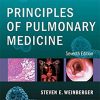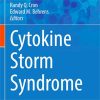The End-expiratory Occlusion Test
ccforum.biomedcentral.comThere is growing evidence that the end-expiratory occlusion (EEO) test reliably detects preload responsiveness. It is easier to perform than passive leg raising and has less limitations than pulse pressure variations, provided that a 15-s respiratory hold can be maintained.
Fluids must be considered as drugs, with serious adverse effects and inconstant efficacy. Then, they should be administered only if there is reasonable chance that cardiac output (CO) will increase in response. Many tests or indices detecting “fluid responsiveness” have been developed for this purpose.
With some of these tests, the relationship between CO and cardiac preload is assessed through the haemodynamic effects of mechanical ventilation. It is the case for the end-expiratory occlusion (EEO) test, which has already been investigated in a reasonable number of studies.
In this commentary, we will explore its haemodynamic effects, review the literature validating it and describe its practical modalities.

















